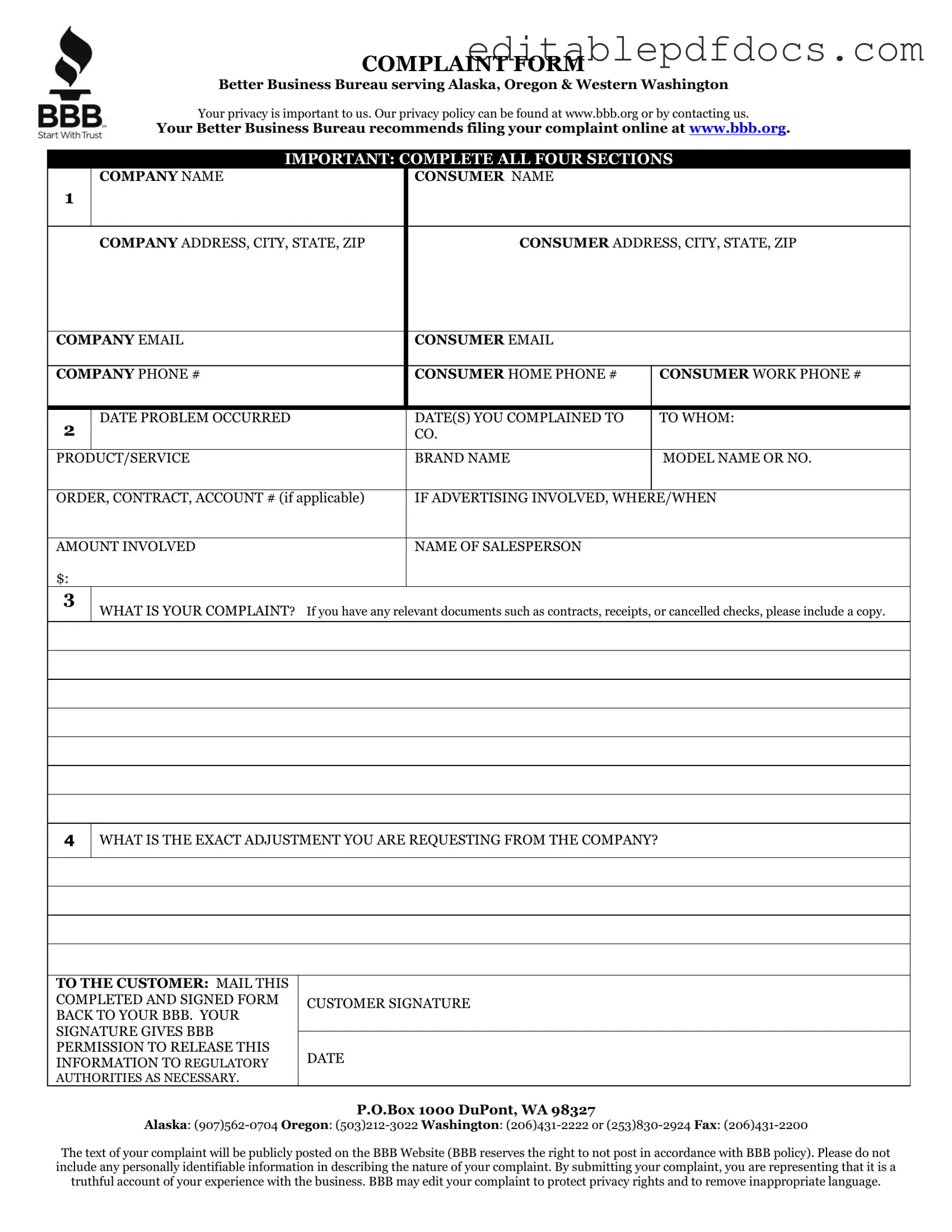Filing a complaint with the Better Business Bureau (BBB) can be a straightforward process, but many individuals make common mistakes that can hinder their efforts. Understanding these pitfalls can help ensure that your complaint is processed efficiently and effectively.
One frequent mistake is failing to provide detailed information. When filling out the complaint form, it's crucial to include specific details about the issue at hand. Vague descriptions can lead to misunderstandings and may result in the complaint being dismissed. Providing clear facts, dates, and any relevant communications can strengthen your case and assist the BBB in addressing your concerns.
Another common error involves neglecting to include supporting documentation. Many people overlook the importance of attaching relevant documents, such as receipts, emails, or photographs. These materials can provide context and evidence for your complaint. Without them, the BBB may struggle to fully understand the situation, which could delay the resolution process.
Additionally, some individuals make the mistake of failing to state their desired resolution. When submitting a complaint, it's important to articulate what you hope to achieve. Whether it's a refund, repair, or another form of compensation, clearly stating your expectations can guide the BBB in addressing your issue. If this step is omitted, the complaint may lack direction and clarity.
Finally, many people do not follow up on their complaints. After submitting the form, it’s essential to stay engaged with the process. Checking in with the BBB can help you stay informed about the status of your complaint. This proactive approach can also demonstrate your commitment to resolving the issue, which may encourage the business to respond more swiftly.
